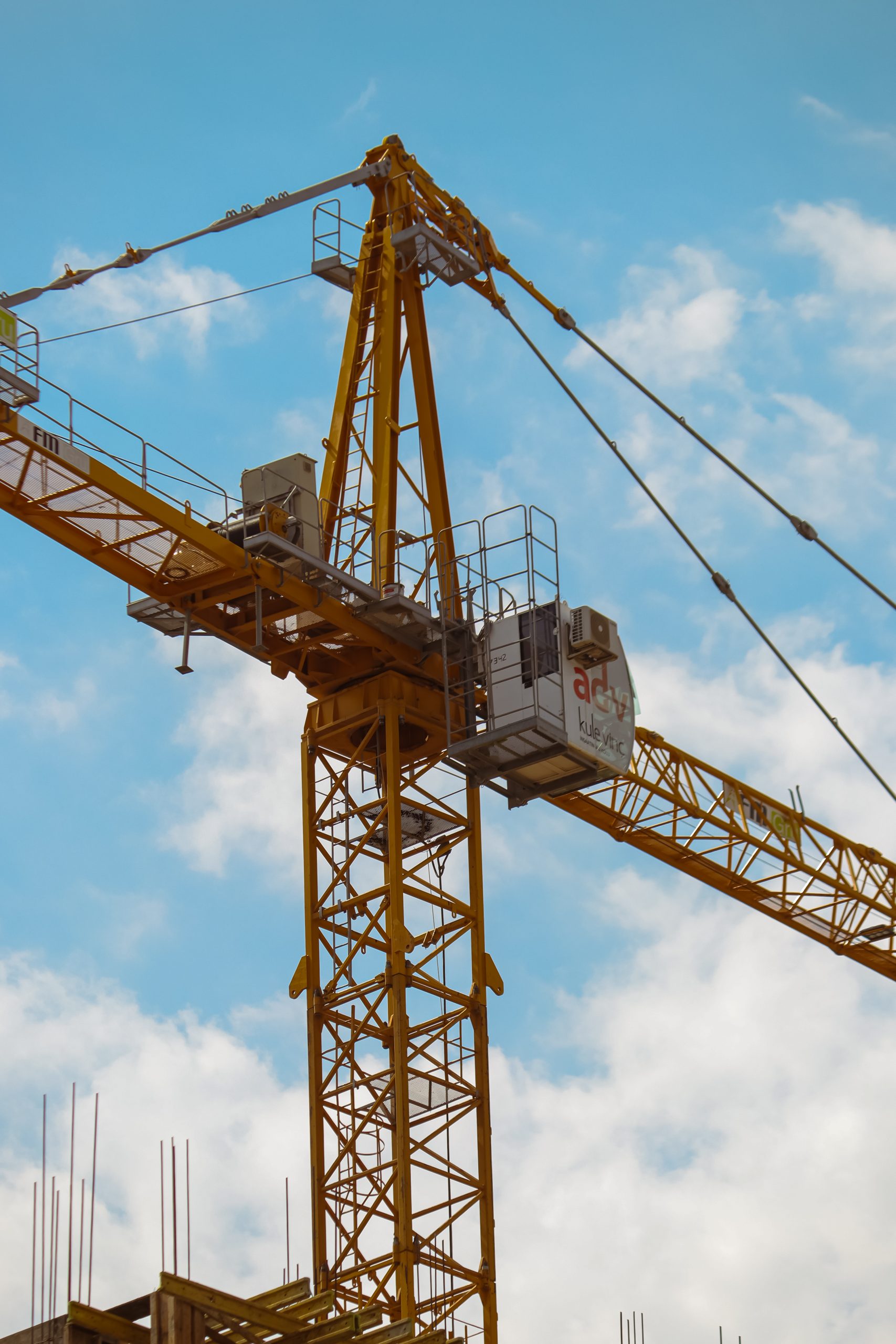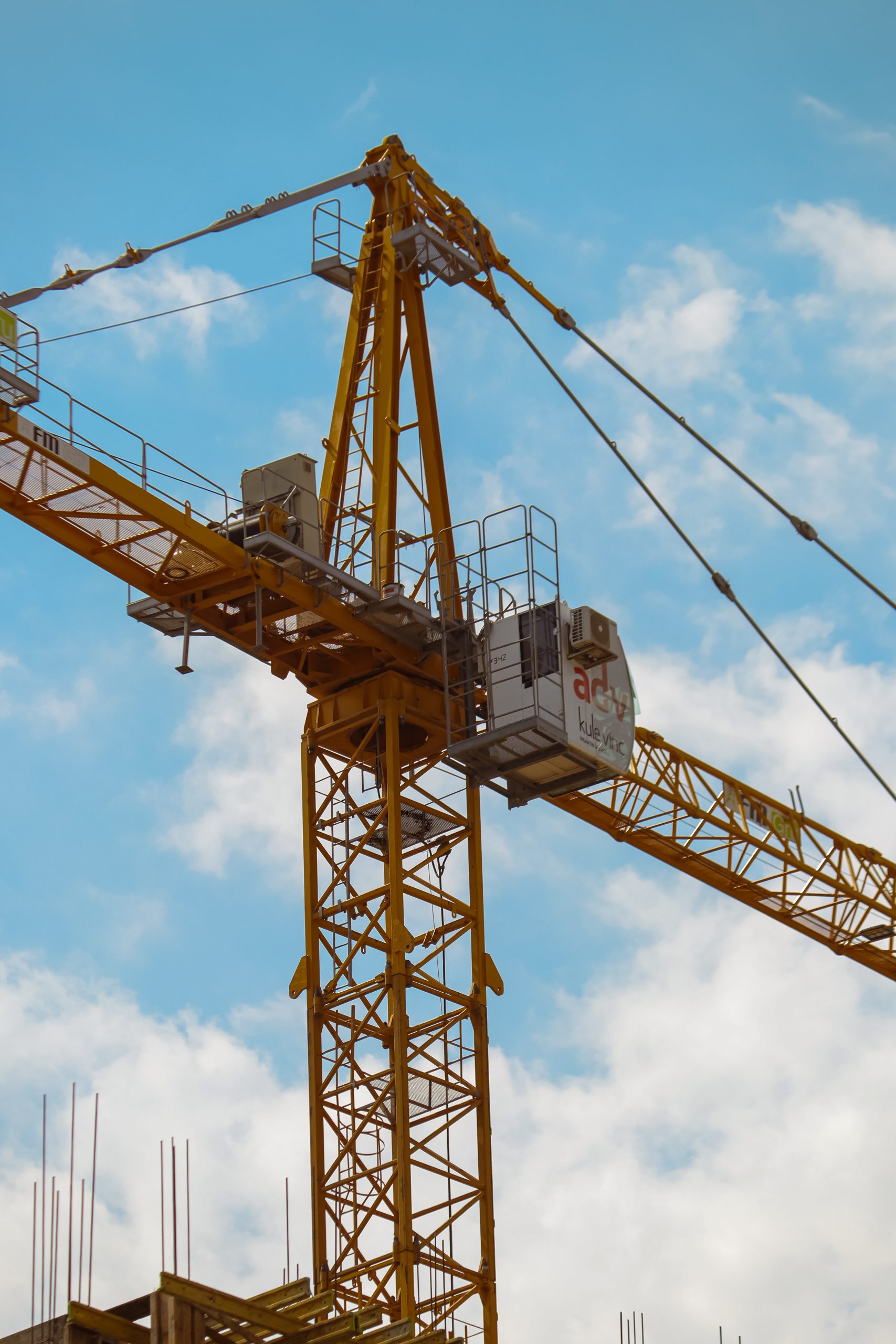Are you a construction company owner or manager who wants to stay updated on labor laws? It can be challenging to navigate the complex legal landscape surrounding labor laws in the construction industry. However, understanding and complying with these laws is crucial to ensure a productive and legally compliant work environment. In this article, we will discuss common legal concerns that construction companies may face, provide reassurance and guidance, and offer some expert tips to help you navigate labor law regulations successfully. So, read on to learn more and take the next step in seeking assistance promptly.
Understanding Labor Laws for Construction Companies
Overview of labor laws
Labor laws are a crucial aspect of the construction industry, governing the relationship between employers and employees. These laws set the standard for fair treatment, workplace safety, and labor practices. By understanding and complying with labor laws, construction companies can maintain a positive work environment, mitigate legal risks, and avoid costly penalties and disputes.
Importance of labor laws for construction companies
Labor laws play a vital role in protecting the rights and well-being of workers in the construction industry. They ensure fair wages, safe working conditions, non-discriminatory practices, and other essential aspects of employment. Compliance with labor laws also helps construction companies build a reputable image, attract skilled employees, and avoid legal liabilities that can arise from non-compliance.
Key labor laws applicable to construction
Several labor laws are applicable to construction companies, including:
-
The Fair Labor Standards Act (FLSA): This law sets standards for minimum wage, overtime pay, and child labor in the United States. Construction companies must adhere to FLSA guidelines regarding employee compensation and working hours.
-
Occupational Safety and Health Act (OSHA): OSHA regulates workplace safety and imposes requirements for hazard communication, training, recordkeeping, and more. Compliance with OSHA regulations is essential for construction companies to prevent accidents, injuries, and costly penalties.
-
Title VII of the Civil Rights Act: This act prohibits workplace discrimination based on race, color, religion, sex, or national origin. Construction companies must ensure equal employment opportunities and prevent discriminatory practices.
Role of government in enforcing labor laws
The government plays a crucial role in enforcing labor laws in the construction industry. Various agencies, such as the U.S. Department of Labor (DOL) and the Occupational Safety and Health Administration (OSHA), oversee compliance and conduct inspections to ensure that construction companies adhere to labor laws. If violations are found, these agencies have the authority to impose penalties, conduct investigations, and take legal action to protect workers’ rights.
Employment Contract and Labor Law Compliance
Importance of employment contracts
Employment contracts are essential for construction companies to establish clear expectations and obligations between employers and employees. These contracts outline the terms of employment, including job responsibilities, compensation, benefits, working hours, and conditions of employment. By having well-drafted employment contracts, construction companies can ensure compliance with labor laws, protect their interests, and minimize potential disputes.
Key elements of an employment contract
An employment contract for construction companies should include the following key elements:
-
Job description and responsibilities: Clearly define the employee’s role, tasks, and responsibilities within the construction company.
-
Compensation and benefits: Specify the employee’s salary, payment schedule, benefits package, and any additional compensation arrangements.
-
Working hours and conditions: Outline the expected working hours, breaks, and any specific conditions related to the construction industry, such as travel requirements or hazardous working environments.
-
Termination and severance provisions: Define the circumstances under which employment can be terminated, notice periods, and any severance or separation benefits.
-
Confidentiality and intellectual property: Address any confidentiality obligations and intellectual property rights that may be relevant to the construction company’s operations.
Ensuring compliance with labor laws
To ensure compliance with labor laws, construction companies must review their employment contracts regularly and update them when necessary. It is essential to stay informed about changes in labor laws and adjust employment contracts accordingly. Seeking legal guidance to draft or review employment contracts can also help construction companies ensure compliance with specific industry regulations and legal requirements.
Consequences of non-compliance
Non-compliance with labor laws in employment contracts can have severe consequences for construction companies. Violations can result in costly lawsuits, penalties, fines, reputational damage, and loss of business opportunities. It is crucial for construction companies to prioritize compliance with labor laws to protect the rights of their employees, maintain a positive work environment, and safeguard their own legal and financial interests.

Workplace Safety and Occupational Health
Importance of workplace safety
Workplace safety is of utmost importance in the construction industry due to the nature of the work involved. Construction sites pose various risks and hazards, including falls, electrocutions, struck-by incidents, and caught-in-between accidents. Prioritizing workplace safety not only protects employees from harm but also helps construction companies avoid legal liabilities, worker compensation claims, and project delays caused by accidents or injuries.
OSHA regulations for the construction industry
The Occupational Safety and Health Administration (OSHA) has specific regulations in place to ensure workplace safety in the construction industry. These regulations cover a wide range of areas, including fall protection, hazard communication, personal protective equipment (PPE), scaffolding, electrical safety, and more. Construction companies must familiarize themselves with OSHA’s construction standards, integrate safety measures into their operations, and provide appropriate training to employees.
Ensuring compliance with safety standards
To ensure compliance with safety standards, construction companies should implement the following measures:
-
Conduct regular safety training: Provide comprehensive safety training to employees, focusing on hazard recognition, risk prevention, and the proper use of protective equipment.
-
Develop and enforce safety policies: Establish clear safety policies and procedures that align with OSHA standards and promote a culture of safety within the construction company.
-
Regularly inspect and maintain equipment: Inspect and maintain all tools, machinery, and equipment to ensure they are in safe working condition and comply with relevant safety standards.
-
Provide necessary personal protective equipment (PPE): Supply appropriate PPE, such as hard hats, safety goggles, gloves, and high-visibility clothing, to all employees and enforce their use on construction sites.
Common workplace hazards in construction
Construction sites are filled with potential hazards that need to be mitigated. Common workplace hazards in the construction industry include:
-
Falls: From heights, ladders, or scaffolding.
-
Struck-by accidents: Being hit by falling objects or moving vehicles.
-
Caught-in-between accidents: Involving equipment or machinery.
-
Electrical hazards: Contact with live wires or faulty electrical systems.
-
Respiratory hazards: Dust, fumes, and hazardous chemicals.
Construction companies must assess these hazards, implement appropriate safety measures, and provide continuous training to employees to prevent accidents, injuries, and potential legal disputes.
Wage and Hour Laws for Construction Companies
Minimum wage requirements
Construction companies must comply with federal and state minimum wage requirements. The Fair Labor Standards Act (FLSA) sets the federal minimum wage, while individual states may have higher minimum wage rates. It is essential for construction companies to pay employees at least the applicable minimum wage to ensure compliance with labor laws.
Overtime pay regulations
The FLSA also establishes regulations for overtime pay. Construction companies must pay eligible employees overtime wages for any hours worked beyond 40 in a workweek. Overtime pay is typically calculated as one and a half times the regular hourly rate. Understanding and adhering to overtime pay regulations is crucial for construction companies to avoid legal disputes and ensure fair compensation for their employees.
Recordkeeping and payroll compliance
Construction companies must maintain accurate records of employee work hours, wages, and other payroll information to comply with wage and hour laws. These records should include time cards, pay stubs, payroll tax documents, and any other relevant information. Proper recordkeeping helps construction companies demonstrate compliance with labor laws and provides documentation in the event of an audit or wage dispute.
Addressing wage disputes
If an employee raises concerns or disputes regarding wages, construction companies should address the matter promptly and in accordance with labor laws. This may involve conducting an internal investigation, reviewing payroll records, and engaging in open and honest communication with the employee. If necessary, seeking legal advice can help construction companies navigate wage disputes and ensure appropriate resolution while minimizing potential legal risks.

Employee Classification and Independent Contractors
Differentiating between employees and independent contractors
Accurate employee classification is essential for construction companies to comply with labor laws and avoid misclassification issues. While independent contractors have more flexibility and control over their work, employees are subject to various labor protections and entitlements. Determining whether an individual is an employee or an independent contractor requires careful consideration of factors such as control over work, level of independence, financial arrangements, and the nature of the working relationship.
Benefits and risks of using independent contractors
Using independent contractors can offer construction companies several benefits, such as greater flexibility, cost savings, access to specialized skills, and reduced administrative burdens. However, there are risks associated with misclassifying individuals as independent contractors when they should be treated as employees. Misclassification can lead to legal disputes, tax liabilities, and claims for unpaid wages or employee benefits. Construction companies must ensure proper classification to avoid these risks.
Misclassification issues and legal consequences
Misclassifying employees as independent contractors can result in significant legal consequences for construction companies. Consequences may include:
-
Back pay and benefits: Construction companies may be required to pay back wages, overtime pay, and employee benefits that were wrongfully denied to misclassified workers.
-
Penalties and fines: Government agencies may impose penalties and fines for labor law violations due to misclassification, which can be substantial and can vary depending on the jurisdiction.
-
Tax liabilities: If independent contractors are later deemed to be employees, construction companies may be liable for unpaid payroll taxes, including Social Security and Medicare contributions.
Ensuring proper classification
To ensure proper employee classification, construction companies should consider the following:
-
Consult legal counsel: Seek legal advice to ensure compliance with labor laws and accurately classify individuals as employees or independent contractors based on the specific circumstances.
-
Review working relationships: Evaluate the nature of the working relationship, considering factors such as control, supervision, job responsibilities, and financial arrangements.
-
Document agreements: Clearly outline the terms of engagement in written agreements for independent contractors, including details regarding work scope, payment terms, and the absence of an employment relationship.
-
Regularly reassess classifications: Review employee classifications periodically to ensure ongoing compliance with labor laws, as the nature of the working relationship may change over time.
Proper classification is crucial for construction companies to maintain compliance with labor laws, avoid legal disputes, and protect the interests of both the company and its workers.
Discrimination and Harassment Prevention
Protected classes under anti-discrimination laws
Anti-discrimination laws protect individuals from unfair treatment based on certain characteristics referred to as protected classes. These protected classes may include race, color, religion, sex, national origin, age, disability, and genetic information. Construction companies must adhere to anti-discrimination laws and ensure that all employees are treated fairly and without prejudice.
Creating a non-discriminatory work environment
Construction companies can create a non-discriminatory work environment by implementing the following measures:
-
Establishing a comprehensive anti-discrimination policy: Develop and communicate a policy that explicitly prohibits discrimination and ensures equal employment opportunities.
-
Providing diversity and inclusion training: Conduct training sessions that promote diversity, inclusion, and cultural sensitivity among employees, fostering an inclusive work environment.
-
Enforcing zero tolerance for discrimination: Respond promptly and decisively to any reports or complaints of discriminatory behavior, taking appropriate corrective actions and imposing disciplinary measures when necessary.
-
Monitoring and addressing potential biases: Regularly review policies, practices, and decision-making processes to identify any potential biases that may contribute to discrimination, taking corrective actions to mitigate them.
Preventing workplace harassment
Workplace harassment, including sexual harassment, is not only morally wrong, but it can also lead to legal liabilities for construction companies. To prevent workplace harassment, construction companies should:
-
Establish a clear anti-harassment policy: Develop and communicate a policy that defines harassment, provides examples, and outlines reporting procedures.
-
Conduct harassment prevention training: Train employees at all levels on what constitutes harassment, how to prevent it, and the importance of creating a respectful work environment.
-
Foster open communication: Encourage employees to report any incidents of harassment promptly and ensure that appropriate investigation procedures are followed.
-
Take immediate corrective action: Respond swiftly to any reports of harassment and take appropriate disciplinary action against offenders, including termination if necessary.
Addressing discrimination and harassment complaints promptly and effectively is essential to maintaining a safe and inclusive work environment within the construction industry.
Unionization and Collective Bargaining
Understanding labor unions and collective bargaining
Labor unions play a significant role in the construction industry, representing the collective interests of employees and negotiating with employers on their behalf. Collective bargaining refers to the process in which labor unions and employers engage in negotiations to establish terms and conditions of employment, including wages, working hours, benefits, and other employment policies.
Rights and obligations of employers and employees
Both employers and employees have rights and obligations when it comes to unionization and collective bargaining. Employers have the right to express their views on unionization and the obligation to bargain in good faith if their employees choose to be represented by a union. Employees have the right to join or form a union and engage in collective bargaining, protected by labor laws.
Navigating union organizing campaigns
If employees express an interest in unionizing, construction companies must navigate union organizing campaigns while adhering to labor laws. Steps that construction companies can take include:
-
Educate employees on unionization: Communicate effectively with employees to provide information about unionization, its implications, and the company’s perspective.
-
Comply with legal requirements: Understand and follow the legal requirements and restrictions imposed by labor laws during union organizing drives.
-
Maintain a positive work environment: Address employee concerns, maintain open lines of communication, and ensure fair treatment to minimize the potential for unionization.
-
Seek legal counsel if needed: If faced with a union organizing campaign, construction companies should consider seeking legal advice to navigate the process effectively and ensure compliance with labor laws.
Negotiating and managing collective bargaining agreements
Negotiating and managing collective bargaining agreements require careful consideration and planning. Construction companies should:
-
Prepare for negotiations: Gather relevant data and information, set negotiation goals, and consider the needs and interests of both the company and the employees.
-
Engage in good-faith bargaining: Negotiate in good faith, considering reasonable proposals from both parties and seeking mutually beneficial solutions.
-
Implement and manage the agreement: Once an agreement is reached, ensure compliance with its provisions, maintain productive labor-management relations, and handle any disputes or grievances that may arise.
Negotiating and managing collective bargaining agreements is a dynamic process that requires effective communication, collaboration, and a commitment to maintaining positive labor relations within the construction industry.
Workplace Privacy and Monitoring
Employee rights to privacy
Employees have certain rights to privacy in the workplace, even in the construction industry. While employers have a legitimate interest in monitoring activities to ensure productivity, safety, and security, construction companies must respect employee privacy within legal boundaries.
Legitimate monitoring practices
Construction companies may have legitimate reasons to monitor certain workplace activities, such as:
-
Video surveillance: Implementing surveillance systems in common areas to deter theft, vandalism, and ensure overall site security.
-
Computer and internet usage: Monitoring computer and internet activities to prevent unauthorized access, protect sensitive information, and ensure compliance with workplace policies.
-
Drug and alcohol testing: Conducting drug and alcohol tests in compliance with applicable laws and regulations to maintain a safe work environment.
Legal considerations for electronic monitoring
When implementing electronic monitoring practices, construction companies must consider legal requirements and potential privacy concerns. Such considerations may include:
-
Obtaining employee consent: In some jurisdictions, employers may be required to obtain employee consent before implementing certain monitoring practices.
-
Providing notice: Informing employees of monitoring practices and the purpose behind them to maintain transparency and manage expectations.
-
Protecting sensitive information: Safeguarding any personal or confidential information collected during monitoring and ensuring compliance with data protection laws.
-
Reviewing local laws: Understanding relevant federal, state, or local laws that govern electronic monitoring practices to ensure compliance.
Balancing privacy and security
Construction companies must strike a balance between employee privacy and maintaining a secure and productive work environment. Open communication, clear policies, and fair practices can help mitigate potential concerns and foster a workplace culture that values privacy while prioritizing safety and security.

Workers’ Compensation and Injury Claims
Overview of workers’ compensation insurance
Workers’ compensation insurance provides medical benefits and wage replacement to employees who suffer work-related injuries or illnesses. Construction companies are typically required by law to carry workers’ compensation insurance coverage to protect their employees and themselves from the financial burden of workplace injuries.
Reporting and documenting workplace injuries
When a workplace injury occurs, it is crucial for construction companies to respond promptly and appropriately. The following steps should be taken:
-
Provide immediate medical care: Ensure the injured employee receives prompt medical attention and any necessary emergency treatment.
-
Report the injury: Follow applicable state guidelines and company procedures to report the injury to the workers’ compensation insurance carrier and the appropriate government agencies.
-
Document the incident: Maintain accurate records of the incident, including witness statements, photographs of the scene, and any other relevant documentation.
-
Cooperate with investigations: If there is an investigation by the workers’ compensation carrier or government agency, cooperate fully, providing all required information and documentation.
Managing workers’ compensation claims
Once a workers’ compensation claim is filed, construction companies should:
-
Communicate with the injured employee: Maintain open lines of communication with the injured employee, providing updates on the status of their claim and offering support throughout the recovery process.
-
Coordinate medical treatment: Ensure the injured employee receives appropriate and necessary medical treatment, following guidelines set by the workers’ compensation insurance carrier.
-
Comply with reporting requirements: Provide any requested information, documentation, or records to the workers’ compensation carrier in a timely manner.
-
Monitor claim progression: Regularly review the status of the claim, tracking medical progress, and ensuring compliance with documentation requirements and deadlines.
Addressing disputes and appeals
If a dispute arises between the construction company and the injured employee regarding a workers’ compensation claim, it may be necessary to engage in dispute resolution or appeals processes. Construction companies should consult legal counsel and follow the appropriate procedures outlined by the workers’ compensation system to address disputes effectively while protecting their rights and the rights of their employees.
Resolving Employment Disputes in the Construction Industry
Mediation and arbitration as alternative dispute resolution
Mediation and arbitration are alternative methods of resolving employment disputes outside of court. These processes can be particularly beneficial for construction companies in terms of efficiency, cost-effectiveness, and maintaining business relationships. Mediation involves a neutral third party assisting in negotiations, while arbitration involves a third party making a binding decision.
Litigation in employment disputes
In some cases, litigation may be necessary to resolve employment disputes within the construction industry. Litigation involves taking the dispute to court, presenting evidence, and allowing a judge or jury to make a decision. Construction companies facing employment disputes should consult legal counsel for guidance and representation throughout the litigation process.
Legal representation for construction companies
Construction companies should consider seeking legal representation when dealing with employment disputes. Employment law attorneys with experience in the construction industry can provide valuable guidance, protect the company’s interests, ensure compliance with labor laws, and advocate for the best possible outcomes in dispute resolution processes or litigation.
Strategies for minimizing employment disputes
While employment disputes are sometimes inevitable, construction companies can adopt strategies to minimize conflicts and promote positive workplace relations. These strategies include:
-
Effective communication: Establish open lines of communication between management and employees, ensuring that concerns are addressed promptly and transparently.
-
Comprehensive policies: Develop clear and comprehensive policies that outline expectations, anti-discrimination measures, grievance procedures, and dispute resolution mechanisms.
-
Training and education: Provide regular training on workplace policies, codes of conduct, and legal obligations to prevent misunderstandings and promote compliance with labor laws.
-
Proactive conflict resolution: Encourage open dialogue, mediation, and informal resolution methods to address conflicts early on and prevent them from escalating into disputes.
By prioritizing effective communication, fostering a positive work environment, and addressing concerns proactively, construction companies can minimize employment disputes and maintain harmonious relationships with their employees.
In conclusion, understanding and complying with labor laws are essential for construction companies to ensure fair treatment, maintain workplace safety, and prevent legal disputes. By prioritizing labor law compliance, construction companies can protect their employees’ rights, maintain a positive work environment, and safeguard their own legal and financial interests. Seek guidance from legal professionals specialized in employment law to ensure compliance with applicable labor laws and minimize potential risks in the construction industry.





















